 The gangs that couldn’t shoot straight. 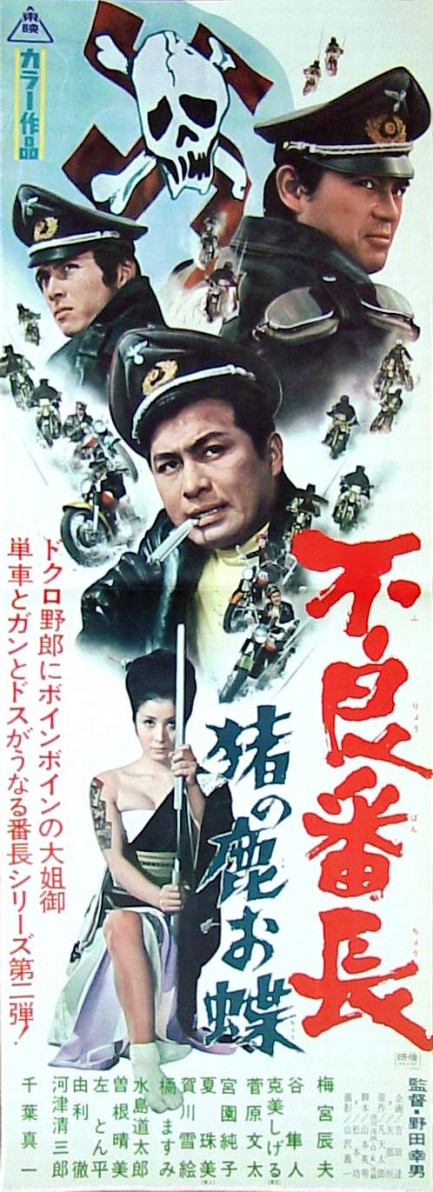
Furyô banchô: Inoshika Ochô, aka Wolves of the City, aka Wolves of the City: Ocho the She-Wolf was a significant hole in our Japanese actioner viewing résumé, but we solved that by watching the film a few days ago. In short, you get an amoral motorcycle gang in Nazi regalia pitted against evil Yakuza, with the tide eventually turning when the legendary hellion Ocho the She-Wolf teams up with the gang. The movie looks great. Yukio Noda’s direction—for the most part—is a marvel. He frames shots with six, seven, sometimes even a dozen interacting characters spread across the screen, yet it all seems effortless. Modern directors don’t seem remotely interested in using shots like these anymore, which is a shame, but it may also be a function of today’s screenwriters choosing to limit the number of characters who interact simultaneously. In any case, this is one thing we loved about the movie and we’ve shared some images of this technique below.
But Wolves of the City is a mixed bag. It relies upon numerous violent set pieces, but where the dialogue sequences feel so carefully thought out, the action is pure Keystone Kops. Because Noda continues framing large numbers of actors in single shots, his performers seem more intent upon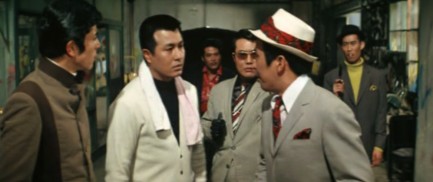 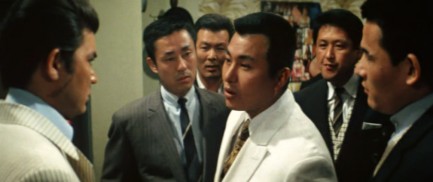 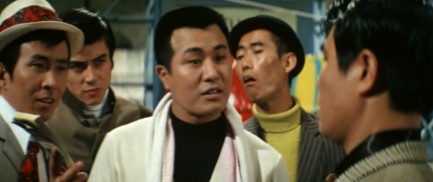  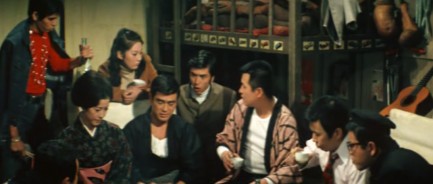 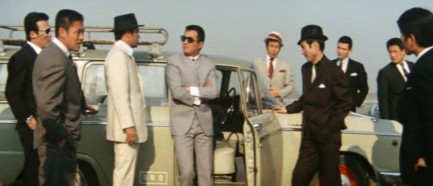 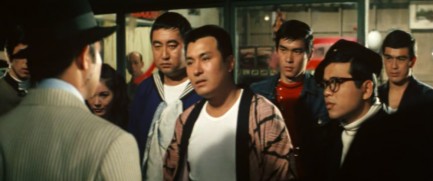 hitting their stage marks than making these confrontations look realistic. They reach their required positions in the scenes, but these hardened gangsters handle pistols and machine guns as if they were rubber snakes, dealing a major blow to what should be the visceral thrill of such moments. By packing the screen during the gunfights Noda forces the audience to accept that nobody can successfully shoot anyone from five feet away. It feels very bang-bang-you’re-dead amateurish, complete with wounded gangsters clutching their chests, spinning around, and falling to the floor. hitting their stage marks than making these confrontations look realistic. They reach their required positions in the scenes, but these hardened gangsters handle pistols and machine guns as if they were rubber snakes, dealing a major blow to what should be the visceral thrill of such moments. By packing the screen during the gunfights Noda forces the audience to accept that nobody can successfully shoot anyone from five feet away. It feels very bang-bang-you’re-dead amateurish, complete with wounded gangsters clutching their chests, spinning around, and falling to the floor.
In the end the plot ushers us through various deals, deceptions, and shootouts, and you finally get the inevitable throwdown between the bikers and the Yakuza. This is the most unlikely sequence of all, with bikers motoring around none too swiftly inside a confined warehouse while still miraculously being missed by a hailstorm of screaming lead. But by now we know what we’re going to get and we just have to go with it. At one point Ocho puts out a gangster’s eyes and archly informs him (as if he can hear through the head-splitting pain), “You’re the seventeenth victim of Ocho of Inoshika’s eye attack!” This movie does attack the eyes rather beautifully, and if you look past the Vaudeville antics of the action scenes you may enjoy it. The panel length poster at top is rare, and as far as we know it’s the only one of its kind to be seen online. Furyô banchô: Inoshika Ochô premiered in Japan today in 1969. 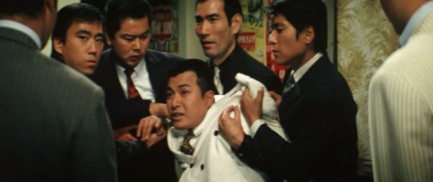 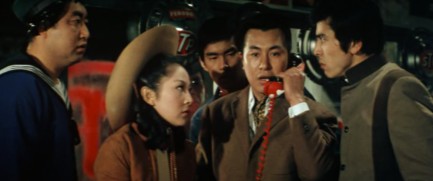  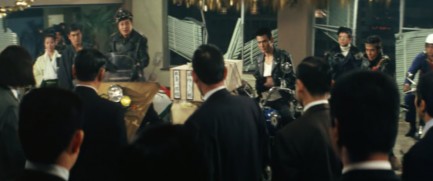 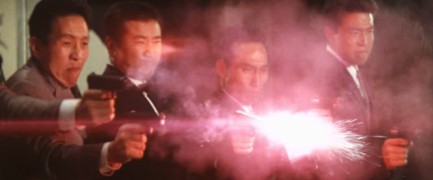 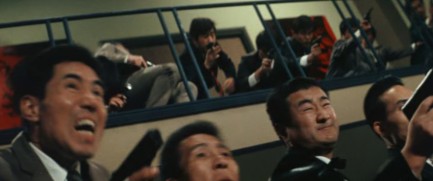
|
 |

The headlines that mattered yesteryear.
1967—First Space Program Casualty Occurs
Soviet cosmonaut Vladimir Komarov dies in Soyuz 1 when, during re-entry into Earth's atmosphere after more than ten successful orbits, the capsule's main parachute fails to deploy properly, and the backup chute becomes entangled in the first. The capsule's descent is slowed, but it still hits the ground at about 90 mph, at which point it bursts into flames. Komarov is the first human to die during a space mission. 1986—Otto Preminger Dies
Austro–Hungarian film director Otto Preminger, who directed such eternal classics as Laura, Anatomy of a Murder, Carmen Jones, The Man with the Golden Arm, and Stalag 17, and for his efforts earned a star on Hollywood's Walk of Fame, dies in New York City, aged 80, from cancer and Alzheimer's disease. 1998—James Earl Ray Dies
The convicted assassin of American civil rights leader Martin Luther King, Jr., petty criminal James Earl Ray, dies in prison of hepatitis aged 70, protesting his innocence as he had for decades. Members of the King family who supported Ray's fight to clear his name believed the U.S. Government had been involved in Dr. King's killing, but with Ray's death such questions became moot. 1912—Pravda Is Founded
The newspaper Pravda, or Truth, known as the voice of the Communist Party of the Soviet Union, begins publication in Saint Petersburg. It is one of the country's leading newspapers until 1991, when it is closed down by decree of then-President Boris Yeltsin. A number of other Pravdas appear afterward, including an internet site and a tabloid. 1983—Hitler's Diaries Found
The German magazine Der Stern claims that Adolf Hitler's diaries had been found in wreckage in East Germany. The magazine had paid 10 million German marks for the sixty small books, plus a volume about Rudolf Hess's flight to the United Kingdom, covering the period from 1932 to 1945. But the diaries are subsequently revealed to be fakes written by Konrad Kujau, a notorious Stuttgart forger. Both he and Stern journalist Gerd Heidemann go to trial in 1985 and are each sentenced to 42 months in prison.
|

|
|

It's easy. We have an uploader that makes it a snap. Use it to submit your art, text, header, and subhead. Your post can be funny, serious, or anything in between, as long as it's vintage pulp. You'll get a byline and experience the fleeting pride of free authorship. We'll edit your post for typos, but the rest is up to you. Click here to give us your best shot.

|
|








 hitting their stage marks than making these confrontations look realistic. They reach their required positions in the scenes, but these hardened gangsters handle pistols and machine guns as if they were rubber snakes, dealing a major blow to what should be the visceral thrill of such moments. By packing the screen during the gunfights Noda forces the audience to accept that nobody can successfully shoot anyone from five feet away. It feels very bang-bang-you’re-dead amateurish, complete with wounded gangsters clutching their chests, spinning around, and falling to the floor.
hitting their stage marks than making these confrontations look realistic. They reach their required positions in the scenes, but these hardened gangsters handle pistols and machine guns as if they were rubber snakes, dealing a major blow to what should be the visceral thrill of such moments. By packing the screen during the gunfights Noda forces the audience to accept that nobody can successfully shoot anyone from five feet away. It feels very bang-bang-you’re-dead amateurish, complete with wounded gangsters clutching their chests, spinning around, and falling to the floor.









































































